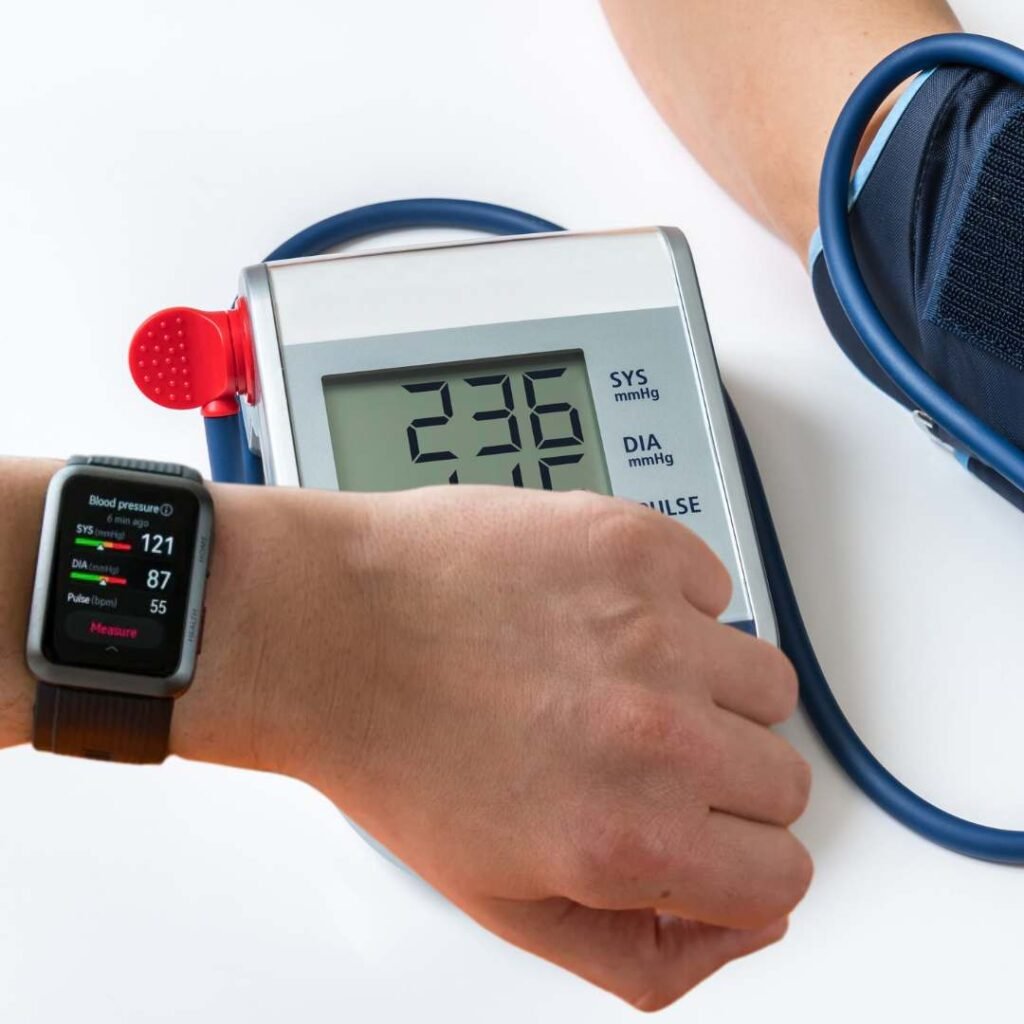How does a smartwatch measure blood pressure?
Welcome to our informative article on how smartwatches measure blood pressure. In recent years, wearable technology has become increasingly popular, and smartwatches, in particular, have gained traction due to their versatility and health monitoring capabilities. In this article, we will delve into the importance of monitoring blood pressure, explore how smartwatches utilize innovative techniques to measure it, and discuss the limitations and considerations associated with this technology.

Importance of Monitoring Blood Pressure
Maintaining optimal blood pressure is crucial for overall health and well-being. High blood pressure, also known as hypertension, is a common condition that affects millions of people worldwide. According to the World Health Organization, nearly 1.13 billion people globally have hypertension[^1^]. It is a significant risk factor for various cardiovascular diseases, including heart attacks and strokes.
1. Prevalence of Hypertension
Hypertension is prevalent across all age groups and has been identified as a leading cause of premature death. It is estimated that around 17.9 million people die each year due to cardiovascular diseases, many of which are related to high blood pressure[^1^]. These alarming statistics highlight the importance of regularly monitoring blood pressure to detect any abnormalities and take appropriate measures to manage it.
2. Benefits of Blood Pressure Monitoring
Regular blood pressure monitoring empowers individuals to make informed decisions about their health. By keeping track of their blood pressure readings, individuals can detect any fluctuations or persistent high readings, enabling them to seek medical advice promptly. This proactive approach aids in the prevention of cardiovascular diseases and allows for timely intervention, potentially saving lives.
How Smartwatches Measure Blood Pressure
Smartwatches incorporate advanced technology to provide users with convenient and continuous blood pressure monitoring. Let’s explore the techniques utilized by these devices.
1. Optical Sensors
One of the primary methods employed by smartwatches to measure blood pressure is through optical sensors. These sensors utilize photoplethysmography (PPG) technology, which measures the changes in blood volume in the vessels beneath the skin. When the heart pumps, blood flow increases, causing slight variations in the volume of blood vessels. Optical sensors detect these changes and convert them into blood pressure readings.
2. PPG Technology
PPG technology relies on the principle of light absorption and reflection. Smartwatches equipped with PPG sensors emit light onto the user’s skin, usually on the wrist, and measure the reflected light. The detected variations in light absorption are then analyzed to determine blood pressure levels. This non-invasive method allows for frequent and convenient blood pressure monitoring without the need for traditional cuff-based devices.
3. Calibration and Accuracy
To ensure accurate readings, smartwatches need to be calibrated properly. Manufacturers employ sophisticated algorithms and machine learning techniques to calibrate the optical sensors and improve accuracy over time. However, it is important to note that smartwatches may not be as accurate as professional medical devices, such as arm cuffs used by healthcare professionals. Users should consider smartwatch blood pressure measurements as indicative and consult healthcare providers for a comprehensive evaluation.
Limitations and Considerations
While smartwatches offer a convenient means of blood pressure monitoring, there are certain limitations and considerations to be aware of. Factors such as motion, environmental conditions, and individual differences in blood vessel characteristics can affect the accuracy of readings. Users should also be cautious about relying solely on smartwatch readings for medical decisions and always consult healthcare professionals for a comprehensive evaluation and diagnosis.
Conclusion
In conclusion, smartwatches have revolutionized the way we monitor our health, including blood pressure. By utilizing optical sensors and PPG technology, these wearable devices provide users with convenient and continuous blood pressure monitoring.
While they are not as accurate as professional medical devices, smartwatches serve as valuable tools for proactive health management.
FAQs:
- Q: Can smartwatches accurately measure blood pressure?
- A: Smartwatches provide blood pressure readings, but they may not be as accurate as professional medical devices. Consult healthcare professionals for a comprehensive evaluation.
- Q: How often should I measure my blood pressure with a smartwatch?
- A: It is recommended to follow the guidelines provided by healthcare professionals for the frequency of blood pressure measurements.
- Q: Are smartwatches suitable for everyone to monitor blood pressure?
- A: Smartwatches can be used by many individuals, but specific considerations may apply. Consult healthcare professionals to determine if they are suitable for your health needs.
- Q: Can environmental factors affect the accuracy of smartwatch blood pressure readings?
- A: Yes, environmental conditions and other factors such as motion can impact the accuracy of smartwatch blood pressure measurements.
- Q: Are smartwatches a replacement for regular medical check-ups?
- A: No, smartwatches should complement regular medical check-ups and not replace them. Always consult healthcare professionals for a comprehensive evaluation and diagnosis.
